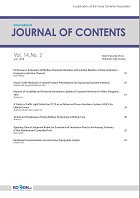- Log In/Sign Up
- P-ISSN1738-6764
- E-ISSN2093-7504
- KCI
 ISSN : 1738-6764
ISSN : 1738-6764
Correlation Analysis of Atmospheric Pollutants and Meteorological Factors Based on Environmental Big Data
Abstract
With the acceleration of urbanization and industrialization, air pollution has become increasingly serious, and the pollution control situation is not optimistic. Climate change has become a major global challenge faced by mankind. To actively respond to climate change, China has proposed carbon peak and carbon neutral goals. However, atmospheric pollutants and meteorological factors that affect air quality are complex and changeable, and the complex relationship and correlation between them must be further clarified. This paper uses China’s 2013-2018 high-resolution air pollution reanalysis open data set, as well as statistical methods of the Pearson Correlation Coefficient (PCC) to calculate and visualize the design and analysis of environmental monitoring big data, which is intuitive and it quickly demonstrated the correlation between pollutants and meteorological factors in the temporal and spatial sequence, and provided convenience for environmental management departments to use air quality routine monitoring data to enable dynamic decision-making, and promote global climate governance. The experimental results show that, apart from ozone, which is negatively correlated, the other pollutants are positively correlated; meteorological factors have a greater impact on pollutants, temperature and pollutants are negatively correlated, air pressure is positively correlated, and the correlation between humidity is insignificant. The wind speed has a significant negative correlation with the six pollutants, which has a greater impact on the diffusion of pollutants.
- keywords
- Environmental of Big Data, Visualization, Air Quality Index, Pearson Correlation Coefficient
- Downloaded
- Viewed
- 0KCI Citations
- 0WOS Citations

